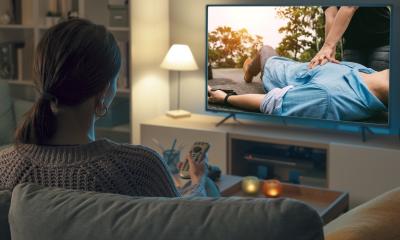News • Global warming
Climate Change will increase kidney stones
Rising temperatures due to climate change will lead to an increase in cases of kidney stones over the next seven decades, even if measures are put in place to reduce greenhouse gas emissions, according to a new study by researchers at Children’s Hospital of Philadelphia (CHOP).

Image source: NASA, Atlanta thermal, marked as public domain, details at Wikimedia Commons
Based on data from South Carolina, the study found the increase will be steeper if no action is taken, but an uptick will occur even with mitigation actions, costing the state healthcare system approximately $57 million in the latter scenario and $99 million if nothing is done.
“While it is impossible to predict with certainty how future policies will slow or hasten greenhouse gas emission and anthropogenic climate change, and to know exactly what future daily temperatures will be, our analysis suggests that a warming planet will likely cause an increased burden of kidney stone disease on healthcare systems,” said Gregory E. Tasian, MD, MSc, MSCE, an attending pediatric urologist in the Division of Urology at Children's Hospital of Philadelphia and senior author of the study.
Kidney stone disease is a painful condition caused by hard deposits of minerals that develop in concentrated urine and cause pain when passing through the urinary tract. The incidence of the condition has increased in the last 20 years, particularly among women and adolescents. Prior research has demonstrated that high ambient temperatures increase the risk of developing kidney stone disease; in the United States, there is an increase in the incidence of kidney stones from North to South, and there is a rapid increase in risk of kidney stone presentations following hot days. However, previous studies have not precisely projected how climate change will impact the burden of kidney stone disease in the future.
To do so, researchers created a model to estimate the impact of heat on future kidney stone presentations in South Carolina. The researchers chose to use South Carolina as a model state because it lies within the “kidney stone belt” of the United States, a region in the Southeastern U.S. with a higher incidence of kidney stone disease; the state also uses an all-payer claims database, meaning researchers could capture stone diagnoses across the population, regardless of payer status.
The researchers first determined the relationship between historic daily statewide mean temperatures and kidney stone presentations in South Carolina from 1997 to 2014. The researchers used wet-bulb temperatures (WBT), a moist heat metric that accounts for both ambient heat and humidity, which is a more accurate temperature metric for predicting kidney stones. They then used that data to forecast the heat-related number of kidney stones and associated costs to 2089 based on projected daily WBT under two climate change scenarios.
The first climate change scenario (RCP 4.5) represents an “intermediate” future, with shifts to lower-emissions sources of energy, the use of carbon capture technology, prices on CO2 emissions, and an expansion of forest lands from the present day to 2100. The second scenario (RCP 8.5) represents a future with mostly uninhibited greenhouse gas emissions. RCP 4.5 projects a 2.3°C increase in mean temperature per 5-year period from 2010-2014 to 2085-2089, while RCP 8.5 projects a 3.6°C increase in the same time frame.
Using their model, the researchers found that by 2089, kidney stones due to heat would increase statewide by 2.2% from baseline in the “intermediate” future of RCP 4.5 and by 3.9% in RCP 8.5. Based on a baseline average cost per patient of more than $9,000, the researchers forecast that from 2025 to 2089, the total cost attributable to these excess kidney stones would be $56.6 million for RCP 4.5 and $99.4 million for RCP 8.5.
“Our analysis is a model to conceptualize how the burden of kidney stone disease is expected to progress with climate change, and also how mitigations to greenhouse gas emissions can offset some of this burden,” said first author Jason Kaufman, a fourth-year medical student at the University of Pennsylvania Perelman School of Medicine.
“With climate change, we don't often talk about the impact on human health, particularly when it comes to children, but a warming planet will have significant effects on human health,” Tasian said. “As pediatric researchers, we have a duty to explore the burden of climate change on human health, as the children of today will be living this reality in the future.”
Source: Children's Hospital of Philadelphia
10.01.2022











